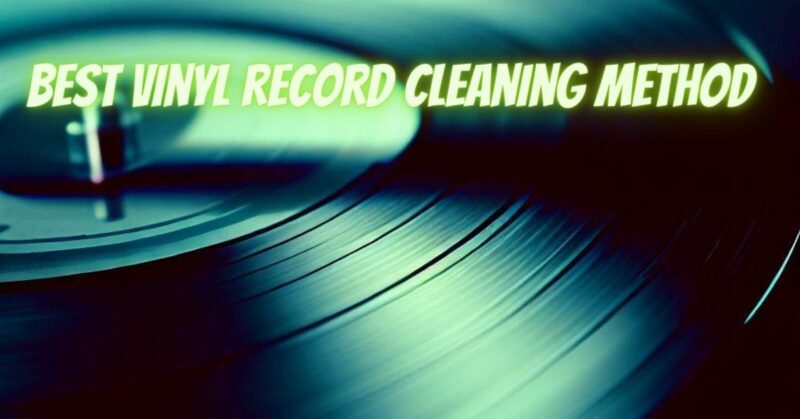Vinyl records require regular cleaning to remove dust, dirt, and other contaminants that can accumulate over time and affect sound quality. Choosing the best vinyl record cleaning method is crucial for preserving the integrity of your collection and enjoying optimal audio playback. In this article, we will explore different vinyl record cleaning methods, highlighting their pros and cons to help you determine the best approach for your specific needs.
- Dry Cleaning Methods:
a) Carbon Fiber Brush:
- Carbon fiber brushes are a popular choice for dry cleaning vinyl records.
- Gently brush the record surface in a straight line, starting from the outer edge and moving towards the center, following the grooves.
- Carbon fiber brushes help remove surface dust and static charge, but they may not be effective for more stubborn dirt or grime.
b) Velvet Brush:
- Velvet brushes, also known as record cleaning pads, are made of soft velvet-like material.
- Similar to carbon fiber brushes, use a sweeping motion from the outer edge to the center of the record.
- Velvet brushes are gentle on the record surface and can help remove light debris, but they may not be as effective for deep cleaning.
- Wet Cleaning Methods:
a) Distilled Water and Microfiber Cloth:
- Create a mixture of distilled water and a small amount of mild liquid dish soap (free from dyes or fragrances).
- Moisten a microfiber cloth with the cleaning solution, being careful not to saturate it excessively.
- Gently wipe the record surface in a circular motion, following the grooves.
- Rinse the cloth frequently and use a separate cloth to remove any remaining moisture.
b) Record Cleaning Machines:
- Record cleaning machines use a combination of cleaning solution, brushes, and suction to thoroughly clean vinyl records.
- Place the record on the machine’s platter, apply the cleaning solution, and let the machine do the work.
- The brushes agitate the solution, removing dirt and contaminants, while the suction removes the liquid and debris.
- Record cleaning machines provide a more thorough and efficient cleaning process but can be expensive and require additional setup.
c) Ultrasonic Cleaning:
- Ultrasonic cleaning involves using specialized equipment that emits high-frequency sound waves to agitate and remove dirt from the record’s surface.
- Records are submerged in a cleaning solution while ultrasonic waves create microscopic bubbles that gently clean the grooves.
- Ultrasonic cleaning is highly effective for deep cleaning and removing stubborn contaminants, but it is often a professional service due to the specialized equipment required.
The best vinyl record cleaning method depends on your preferences, budget, and the level of cleaning required for your records. Dry cleaning methods like carbon fiber brushes and velvet pads are suitable for routine maintenance and surface dust removal. Wet cleaning methods using distilled water and mild soap offer a deeper clean for more stubborn dirt and grime. Record cleaning machines and professional ultrasonic cleaning provide the most comprehensive and effective results but come at a higher cost.
Whichever method you choose, remember to handle your records with care, follow the recommended procedures, and store them properly in clean sleeves after cleaning. Regular cleaning will not only improve sound quality but also extend the lifespan of your beloved vinyl collection, ensuring many years of pristine sound enjoyment.


